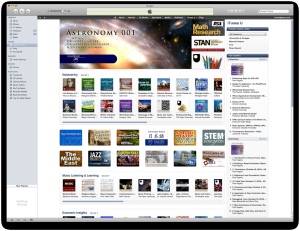Before #ocTEL rolls out of town, I spent a couple of pleasant hours today looking over some of the course materials and posts from the last couple of weeks. Although I’ve been deleting the daily newsletter for the last couple of weeks because I wasn’t able to engage sufficiently with the course material, or do justice to the discussions, today I did have some time so I took a peak at what’s been going on.
The first item that caught my eye was James Little’s blog post evaluating his participation. The opening line certainly struck a chord, “I’m finally joining in at the end”. Ditto. Importantly though, his post articulated the reality of balancing, or juggling, the requirements of MOOC participation while daily life goes on unabashed. Here, he rightly called attention the philosophy of the course designers, who from the outset gave advice on “how to keep calm in the face of abundance”, advocating selectivity and that participants pace themselves and indeed, take time out. All the same, I have to say that I’ve been a bit bothered by how my own engagement in this course has panned out, and I can’t honestly put my finger on (i) why I’m bothered and (ii) why it was so patchy. I suppose I just have to acknowledge that maintaining engagement and holding a steady course isn’t always possible, or indeed expected and that dipping in and out will do just fine, if that’s how the cookie crumbles.

Any way, after that I then tracked back to last week’s “if you only do one thing” activity which offered a paper by Tim Cochrane as an examination of why TEL, or more accurately mLearning, projects fail and what might be learnt when they do. I enjoyed reading this paper and was especially interested to learn of the researcher’s affinity with the PAH Continuum, pedagogy-andragogy-heutagogy (Blaschke 2012; Luckin et al. 2010), which he uses as a critical framework to measure how much pedagogical change a project achieves; that is, a change in pedagogy from teacher-directed pedagogy to student-centred andragogy and ultimately to student-directed or negotiated heutagogy. Equally, I was interested to learn of the researcher’s advocacy for establishing, prior to the deployment of a project, supporting Communities of Practice [COPs] that include all of key tutors, or lecturers. Useful article.
I wasn’t able to complete the task set with the reading; it asked that I think of a project I’ve been involved with or have experience of and write down a list of points relating to the “key successes” and “key failures”. However, I did take a look in the discussion forum where I enjoyed reading and learning of the experiences of others, especially the fact that they were all able to powerfully learn from experiences that might not strictly be deemed as having been successful.
Moving on to read the final week’s activities, I was able to look back over the course and reflect further on my participation. Actually, I was quite surprised how much I did in fact cover, but what really stood out for me the most was the hour or so that I spent in week 5 watching the webinar in which Martin Hawksey gave a run-through of the #ocTEL platform and the technology needed to host a course along the lines of a connectivist style MOOC. Awesome stuff, and strangely I’d quite like to understand this technology some more. Viewing this webinar gave me a real insight into the power of technology, but at the same time it left me with the sense that I was somehow powerless and that without a better understanding or level of skill in terms of “writing the web” then, for better or worse, I’m at the mercy of others. Intriguingly the course ends with the question “Finished ocTEL? What’s next?”. Indeed, what next?
Actually, there’s mention of #ocTEL 2.0, which is something I’ll definitely look out for as I’d like to do this again. There’s much to learn.
Finally, a big thanks to the #ocTEL team. The opportunity to “take a dip” is appreciated.

This work is licensed under a Creative Commons Attribution-NonCommercial-ShareAlike 3.0 Unported License.

